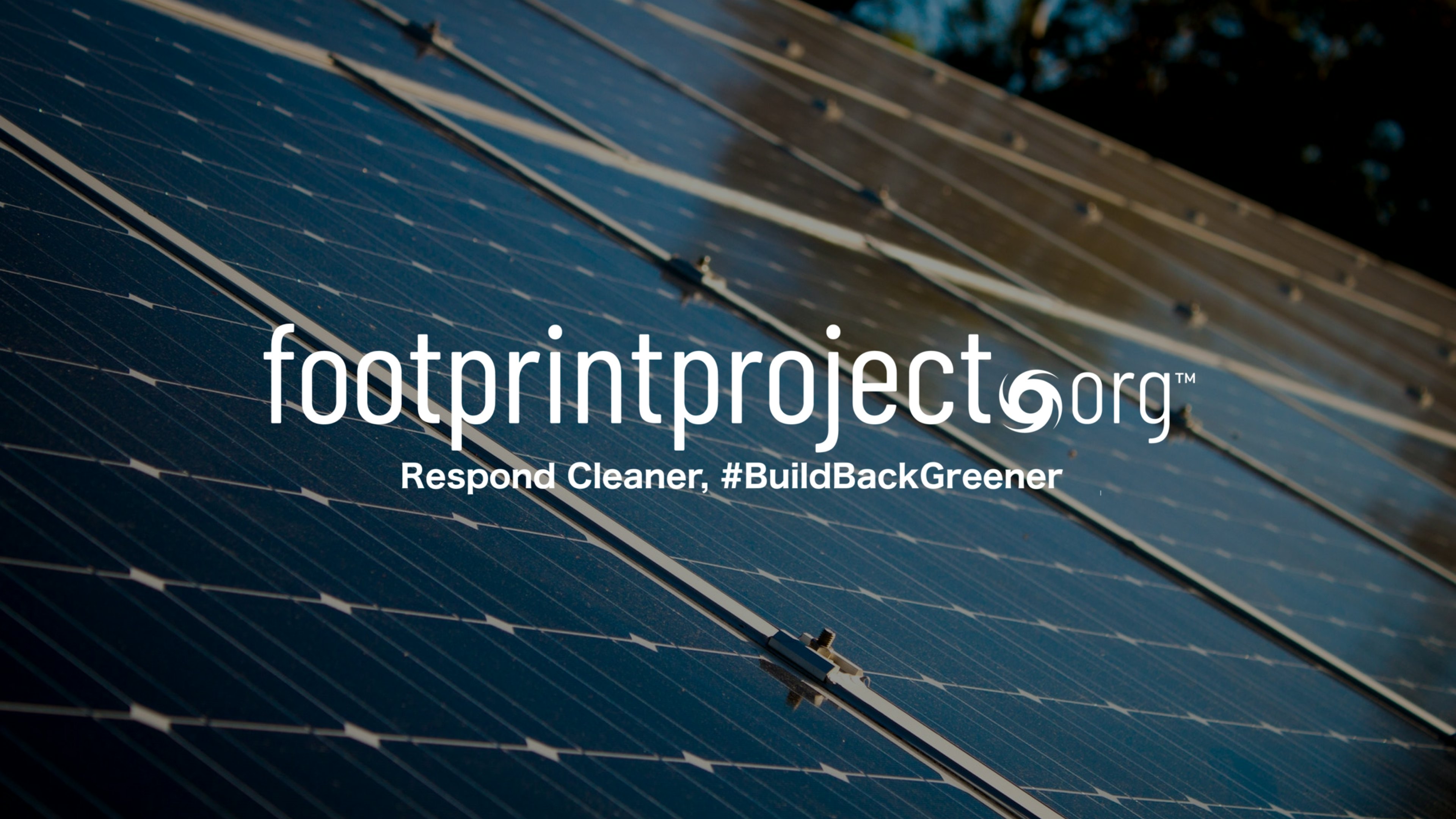Why is my electric bill so high? 10 causes to watch out for

We’ve all had the experience of opening our monthly bills only to be shocked by a sudden rise in electricity costs. “Why is my electric bill so high?” you exclaim, and begin wondering if there is some sort of error or if your power usage really did increase for some reason.
Rising energy bills are frustrating. After all, your housing payment doesn’t change. Your car payment stays the same month after month. There are plenty of reasons your utility bill may increase by $50 or $75 or even double in extreme circumstances. If you’re not sure if your bill is high, you can see the average cost of an electric bill for your state here.
Fortunately, there are plenty of actions you can take to consistently lower your energy usage and save money. The first step is figuring out why your bill has jumped. In this article, we explore 12 common reasons behind high electric bills and what you can do to remedy the situation.
#1. Vampire sources draining power
When you leave home, you turn off the lights and maybe even adjust the thermostat to save energy on heating and cooling while you’re not there. Those are all great things to do, but chances are that you still have “energy vampires” draining electricity.
Vampire sources are appliances and electronics that stay plugged in and quietly consume electricity even when not being used. Think: your television, your kitchen appliances, your smart speaker, your computer. For example, when you leave your computer charging — or even leave the charger plugged into the wall without your computer connected — it will continue to consume energy long after it’s charged.
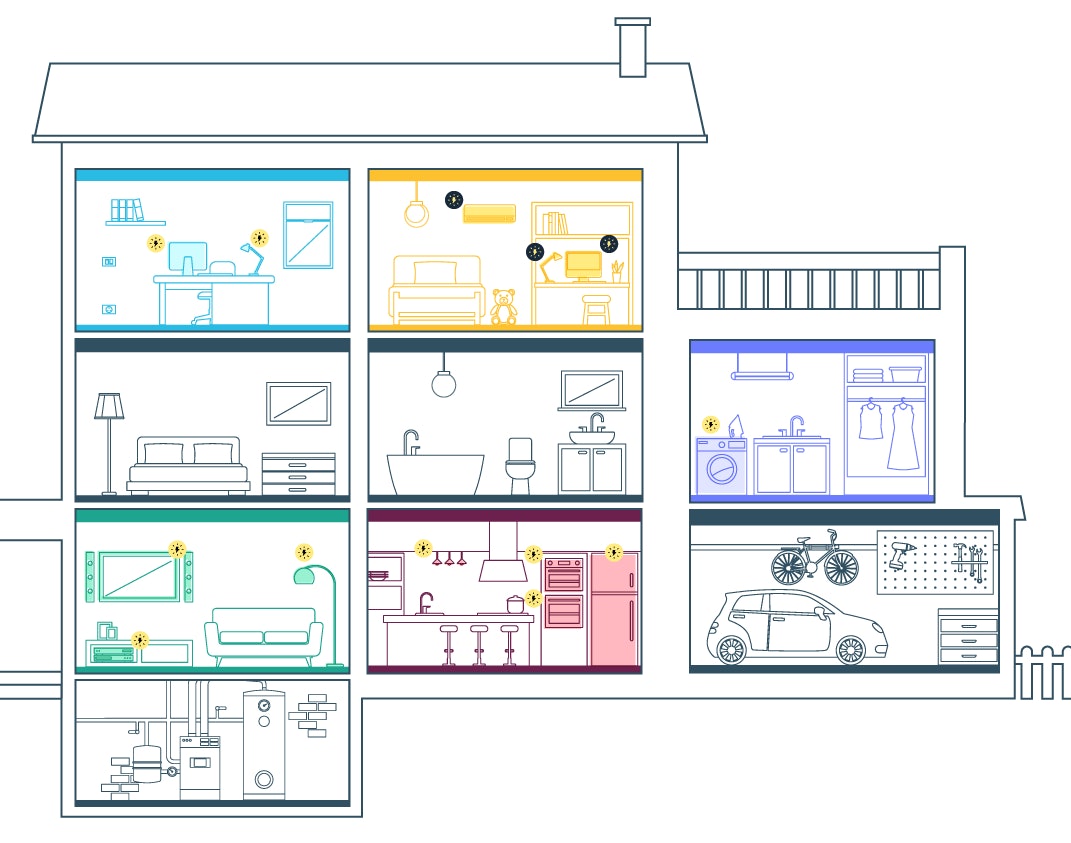
When this happens, you’re wasting both energy and money. While vampire sources may not cause a sudden $50 surge in your energy bill, they are small drains of electricity that add up over time, especially if you have a lot of them. This idle power usage accounts for about 5-10% of residential electricity use, according to the US Department of Energy’s Lawrence Berkeley National Laboratory. That can add up to over $100 a year in energy costs.
The simple solution? Unplug devices when you’re done with them. Even if you’re not actively using them, they’re passively using electricity, and that electricity adds up over time. A power strip Using a power strip with an “off” switch is an easy way to tackle multiple vampire sources at once.
#2. Inefficient light bulbs
These days, you have a lot of choices when you go to buy a light bulb: incandescent bulbs, halogen bulbs, compact fluorescent bulbs (CFLs), and light-emitting diode (LED) bulbs. All these bulbs use different amounts of energy.
Incandescent light bulbs and CFLs emit light and heat in all directions, which can waste a lot of energy. LED bulbs are much more efficient because they emit light in a specific direction. They use 75% less energy than traditional incandescent bulbs and last 25 times longer, which means you’ll save money on bulbs and energy over the long term.

Next time you need a light bulb, look for ENERGY STAR-certified LED lights. These bulbs have been thoroughly tested and adhere to strict conservation requirements, and they can help you lower a high electricity bill.
#3. Insufficient insulation
Insufficient insulation is often one of the biggest culprits behind high energy bills. Think about the work your HVAC system does to keep your home at your desired temperature, especially if you live in an extreme climate. If your home isn’t insulated properly, your warm or cool air will escape.
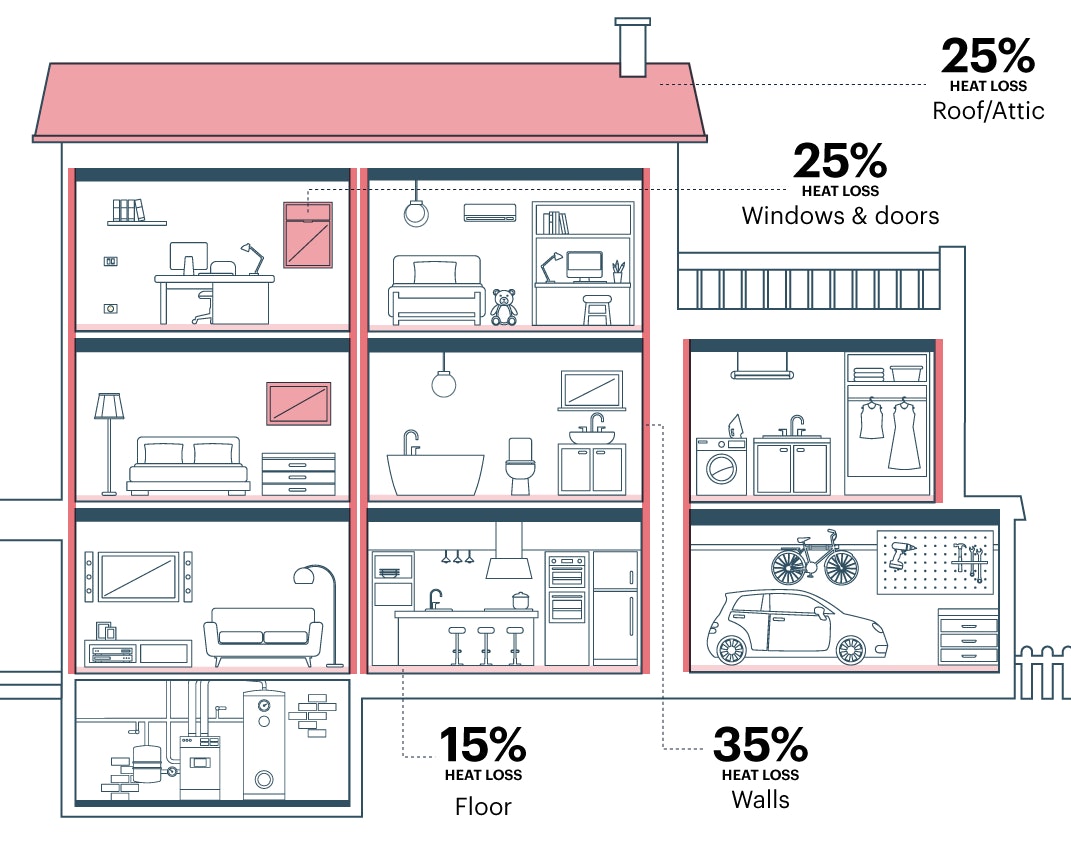
When you consider that heating and cooling your home makes up more than half (54%) of your monthly utility bill, it’s easy to see how poor insulation can increase your electric bill. According to the Environmental Protection Agency (EPA), homeowners can save an average of 11% on total energy costs if they air-seal their homes and add insulation to crucial areas such as attics and crawl spaces.
To fight air leaks, check the exterior frames of your doors and windows to see if they need new caulking. You can also check out these tips on testing the insulation in other parts of your home.
#4. Older, less-efficient appliances
This one is pretty simple — older appliances are less energy efficient than new ones, directly affecting your electric bill. ENERGY STAR appliances use anywhere from 10-50% less energy than their less-efficient counterparts.
ENERGY STAR appliances are independently certified to “save energy, save money, and protect the climate.” For example, replacing a 10-year-old refrigerator with a newer, more efficient model can save you $144 in energy costs over five years (based on national average electricity rates).
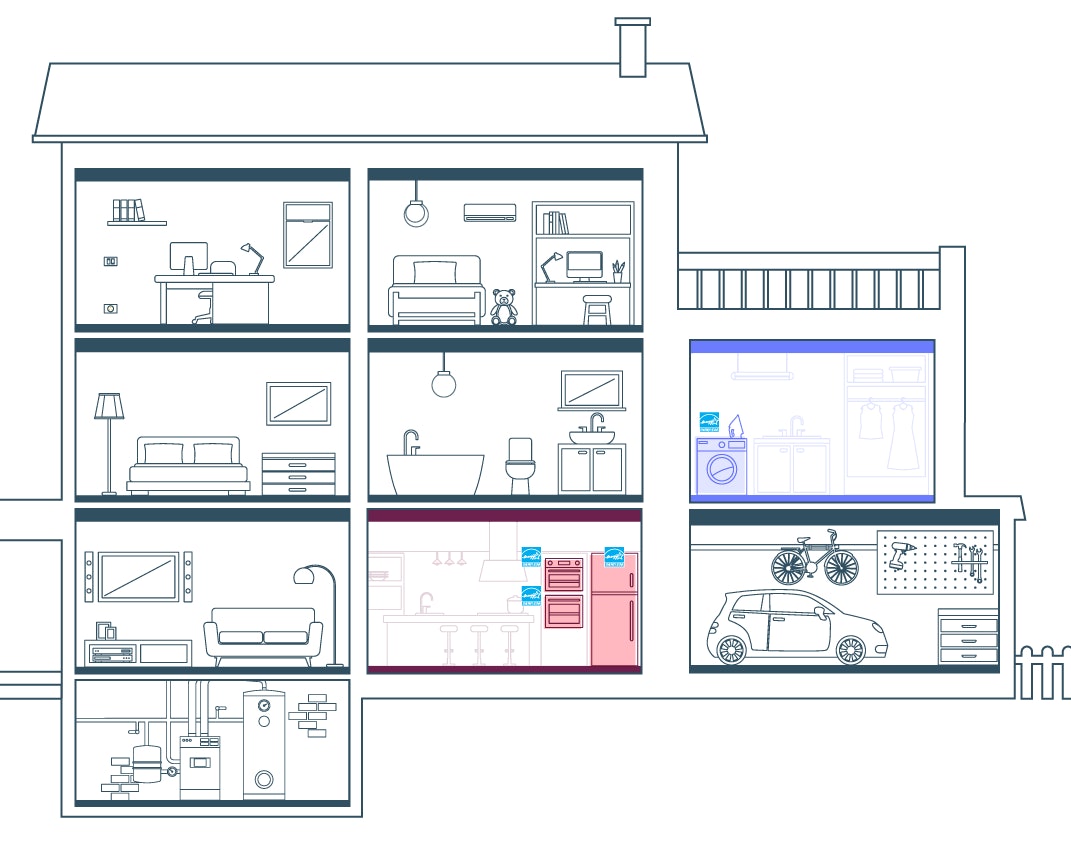
#5. Irregular or inefficient thermostat use
How you manage your thermostat can also raise or lower your electric bill. Most of us adjust our thermostats based on how warm or cool we want to be. “It’s cold outside today? Bump that thermostat up!”
In reality, this is an inefficient way to control the temperature of your home. Instead of adjusting the temperature based on what you want, think more about what your home needs and use a smart or programmable thermostat to help automate those needs. For instance, you can program your heating or cooling to dial back during the day when no one is home, or at night when you’re in bed.
Even when you are home, see if you can adapt to raising the temperature just a little bit in the summer, or lowering it in the winter. For every degree you set back your thermostat, you can save about 3-5% on your energy consumption which translates to a lower electric bill. So next time you’re chilly, consider throwing on a sweater instead of bumping up the heat!
#6. Peak-time energy use
Just like you may pay more for travel during the holidays, you may pay more for electricity during the most popular energy use times. Energy rates fluctuate throughout the day based on demand. Because many Americans still work from nine to five outside the house, most at-home energy use takes place first thing in the morning or during the evening. That’s also when energy rates are highest because of the increase in demand.
Knowing this, you can strategically limit your use of appliances during these peak times. If you can, do some of your typical evening chores during the middle of the day or later at night to take advantage of the lower rates. Put your dishwasher on a delay to run overnight, for instance. Your electric bill will thank you.
#7. Your social life (really)
Whether it’s over the summer or the festive holiday season, there are times of year when you might find yourself hosting a few parties. What happens when you host friends and family? You cook a little more, you have more lights on, and you might stay up a little later than usual, using electricity for longer.
If you host guests frequently during a given month, you’ll probably see that reflected in your electric bill. While this may not be a cause for concern or something you want to change, it helps you understand why your bill has increased during certain seasons.
#8. Changes in your energy use
If you’re not tracking your energy consumption, it’s easy to assume that you use roughly the same amount of energy each month. This is likely not the case. Think about the times of year when you use more electricity: In the middle of the summer, for example, you may run your air conditioner more often.
There could be other reasons for changes in your electricity use, too. Have you added a new appliance or electronic device to your home recently? Even adding a space heater can result in big increases in your energy bill. Let’s say you have a 1,500-watt electric space heater and the current energy rate is 10.5 cents per kilowatt-hour (you can check your energy bill for the exact rate). If you run that space heater for eight hours overnight, it’s costing you $1.26 a day.
(1500 watts x 8 hours / 1,000) x $0.105 = $1.26
Over a 30-day month, your energy bill costs $37.80 extra.
If your energy bill increases, think about how your electricity usage may have increased, too. Then you can take measures to lower your usage, such as unplugging vampire sources (#1) and using appliances at off-peak times (#6).
#9. Extreme weather and climate change
Believe it or not, residential electric bills doubling from month to month is not as unusual as you might think (or hope). One of the main reasons is climate change.
Places with very warm summers or very cold winters will usually see electric rates increase during peak demand for cooling or heating. If you live in Minnesota, for example, the winters will be very chilly and your heater will have to work overtime to keep your home warm.
Not only are residents in extreme weather zones using more energy to keep their homes temperate, but that energy will probably cost more because demand is so high. Everyone is trying to heat or cool their homes simultaneously, so utility companies charge higher rates during those peak times. Research shows that climate change will cause customers of one utility company, ComEd, to pay an additional $10.9 billion on their electric bills over the next 30 years.
#10. Rising electricity rates
Another reason your bill may be higher is because electricity is becoming more expensive. Energy production costs have risen year over year, so your rates have increased to match. According to the US Energy Information Administration (EIA), in November 2023 the average U.S. household paid 16.19 cents per kilowatt-hour of electricity. That’s up 4% from a nationwide average of 15.55 cents in November 2022 and marks a whopping 24% increase from the average rate of 13.04 cents in November 2019.
While there isn’t much you can do to control trends in energy rates, there are steps you can take to counteract the rising cost of electricity. Participating in a renewable energy program such as community solar is a great way to achieve guaranteed savings on your monthly electric bill.
Save on your electric bill with community solar
Joining a community solar program is one of the easiest ways to save money on your electric bill while supporting the clean energy movement. Getting started with Arcadia couldn’t be easier. It only takes a few clicks to find out if you’re eligible. Click the button below to see if you qualify to save on your annual energy bill.
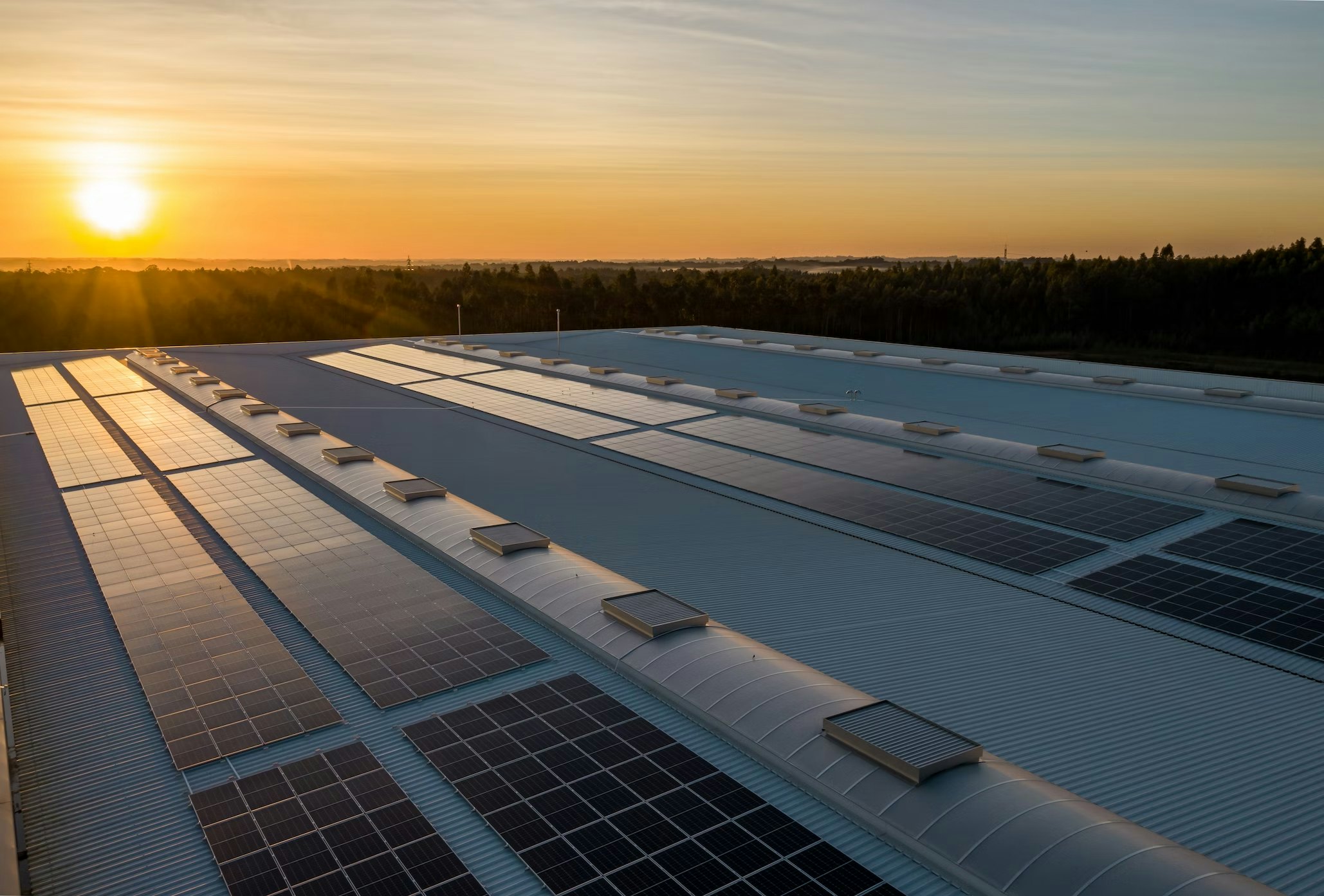
Ready to make an impact? Sign up for Arcadia community solar today!
Get started

